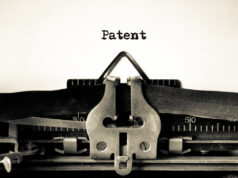
BrainCool wants to reform stroke care
After attracting a lot of attention for its EU-funded stroke study, BrainCool has now launched a new strategy to target stroke as a new medical indication for RhinoChill. In an interview with BioStock, CEO Martin Waleij says that it would mean a paradigm shift for stroke care.
BrainCool is active in the field of Targeted Temperature Management (TTM), which means an early and fast cooling (hyperthermia) with controlled temperature control.
The products RhinoChill System and BrainCool System (marketed as IQool System in the US) are part of the company’s BrainCell concept for the treatment of stroke and sudden cardiac arrest. An early and fast cooling is first obtained with RhinoChill – a portable, battery-powered cooling device – followed by continuous cooling with the BrainCool System.
The Cooral System, which is used for the treatment of oral mucositis, has received both Breakthrough Device classification and FDA approval in the United States.
Hypothermia in connection with thrombectomy
After a confirmed stroke, the blood clot that obstructs the brain’s blood flow can be mechanically removed through a thrombectomy. Still, permanent damage can occur as blood flow returns to the brain – so-called reperfusion injuries. BrainCool’s goal with the BrainCell concept is to reduce such injuries by cooling down the affected brain tissue before the reflux occurs.
In 2021, BrainCool initiated a clinical development programme with the University Hospital of Freiburg, sponsored with 3 million Euro by the EU. The studies, Cottis 1 and Cottis 2 (“Combination of Targeted temperature management and Thrombectomy after acute Ischemic Stroke”), were designed with the aim of measuring the clinical benefits from combining the BrainCell concept with thrombectomy, and comparing them to today’s standard treatment.
The first study was presented in October 2022. The treatment led to a doubling of the number of patients who survive, with good neurological function already at the time of discharge from hospital. However, this study was not designed to measure survival but constitutes preparation for the larger upcoming randomised pivotal clinical trial, Cottis 2.
Comments from the CEO
Yesterday, BrainCool announced that it is now including stroke as a new medical indication for RhinoChill. The aim is to obtain high cost compensation. According to the company, the results from Cottis 1 attracted a lot of international attention. Now, a significantly larger follow-up randomised trial of 400 patients – Cottis 2 – is being planned.

To find out more about the new plans for RhinoChill, BioStock contacted Martin Waleij, CEO of BrainCool.
Martin, you say that RhinoChill could mean a paradigm shift for stroke care. Can you elaborate on this?
– After all, it is no secret that R&D has been defined as a money graveyard for the pharma industry. In the review article “Pharmacological brain cytoprotection in acute ischaemic stroke — renewed hope in the reperfusion era | Nature Reviews Neurology,” they highlight the fact that, in the last 40 years, no less than 1,000 pharma candidates have failed to reach the market for ischemic stroke. Considering this and the large medical need, plus our very strong results in Cottis 1, we see an opportunity to contribute to a fundamental change in how stroke patients can be treated.
When are you expecting the Cottis 2 study to start?
– Our goal is for the second quarter.
What does the strategy entail in establishing a therapy for a combination of the two products?
– After reconciliation with both The Federal Institute for Drugs and Medical Devices (BfArM) in Germany and the FDA, we choose to divide the products on the basis of the requirements from each regulatory body. The second part of our treatment protocol, i.e. treatment in the ICU with BrainCool System is an important part but it will be easier to register them separately as the early fast cooling with RC is completely unique. This does not mean that we will not get additional sales for our IVA system, but it will be in line with the price picture today. For Germany, it is possible to sell it as a concept (from a market perspective) as there are few systems within Neuro IVA. In the US, however, there are guidelines for cooling neurological fever with a large installed base, where a rapid establishment of RhinoChill as a therapy can provide a fast implementation at a high price.
How does this affect the process of approving RhinoChill in the US?
– Given the positive feedback we have received from the FDA, the strategy with RC will be changed. The stroke project with approving a medical indication and establishing a therapy based on the Cottis 2 study will now be first. With the CB certificate for the newly developed product, we are in the final phase, but a registration of the product with temperature control as an indication is simply not interesting at the moment.
Can you tell us more about the CB certificate for RhinoChill?
– On March 20, 2023, we received a CB certificate from Nemko for a new generation of RhinoChill System. Nemko is a well-established laboratory for CB tests in the MedTech industry and is a recognized and high-quality player in international regulatory compliance.
– A CB certificate is a summary certificate for several test reports and certificates regarding the safety of electromagnetic compatibility (EMC) and various safety tests. With a CB certification, you can enter the final phase of the regulatory process, where the clinical documentation is also an essential part.
– The basis available for a CE-marked product is usually not sufficient for access to markets outside the EU/EFTA. As a rule, additional tests and certification are required. National Certification Bodies (NCBs) and test laboratories in 39 countries, 20 of which are located outside the EU, participate in the CB system.
– CB certification is a time- and cost-effective way to reach several markets outside the EU and will facilitate the regulatory and market expansion of the product. The fact that we received this certificate was very positive as we can now continue our regulatory project for the product in both the EU and the US, while it will also be used in the Cottis-2 study.
Today’s TTM products are not approved for temperature control for a specific medical indication. What is your strategy for obtaining such approval?
– After the University Hospital in Freiburg received the go-ahead for its ethics application, the next step has been to obtain approval from the German Medical Products Agency. We have now received information from the German Medical Products Agency that the clinical study Cottis 2 will be approved as a so-called non CE marked clinical study. This means that with a possible positive outcome of the Cottis 2 study, stroke will be one of the product’s medical indications, for improved stroke survival with good and/or full neurological function. In practical terms, however, this means that we aim to establish a medical indication for RhinoChill but, we will have the same indication for the BrainCool System project as we have today.
What have your discussions with regulatory authorities in the EU and the US led to?
– Their answers have been very clear on this point. If the concept of a combined TTM and thrombectomy treatment were to gain acceptance with the support of planned clinical studies, completely new possibilities would open for the treatment of stroke patients. As a result of classifying the method for a medical indication, i.e., in this case stroke, the treatment will become part of the efforts that must be carried out by a healthcare professional. This provides good conditions for obtaining high-cost reimbursement.
Finally, what is the clearest advantage of your products in the treatment of stroke?
– The clearest advantage is that the BrainCell concept can be deployed very quickly. When a blood vessel is blocked in a clot-induced stroke, the brain ages about 3.6 years every hour. Therefore, a very early and effective treatment is crucial. The National Board of Health and Welfare’s national guidelines for the care of stroke state that thrombectomy can be performed within 6–24 hours after the onset of symptoms to reduce the degree of functional dependence, if the patient still has salvageable brain tissue.
The content of BioStock’s news and analyses is independent but the work of BioStock is to a certain degree financed by life science companies. The above article concerns a company from which BioStock has received financing.

